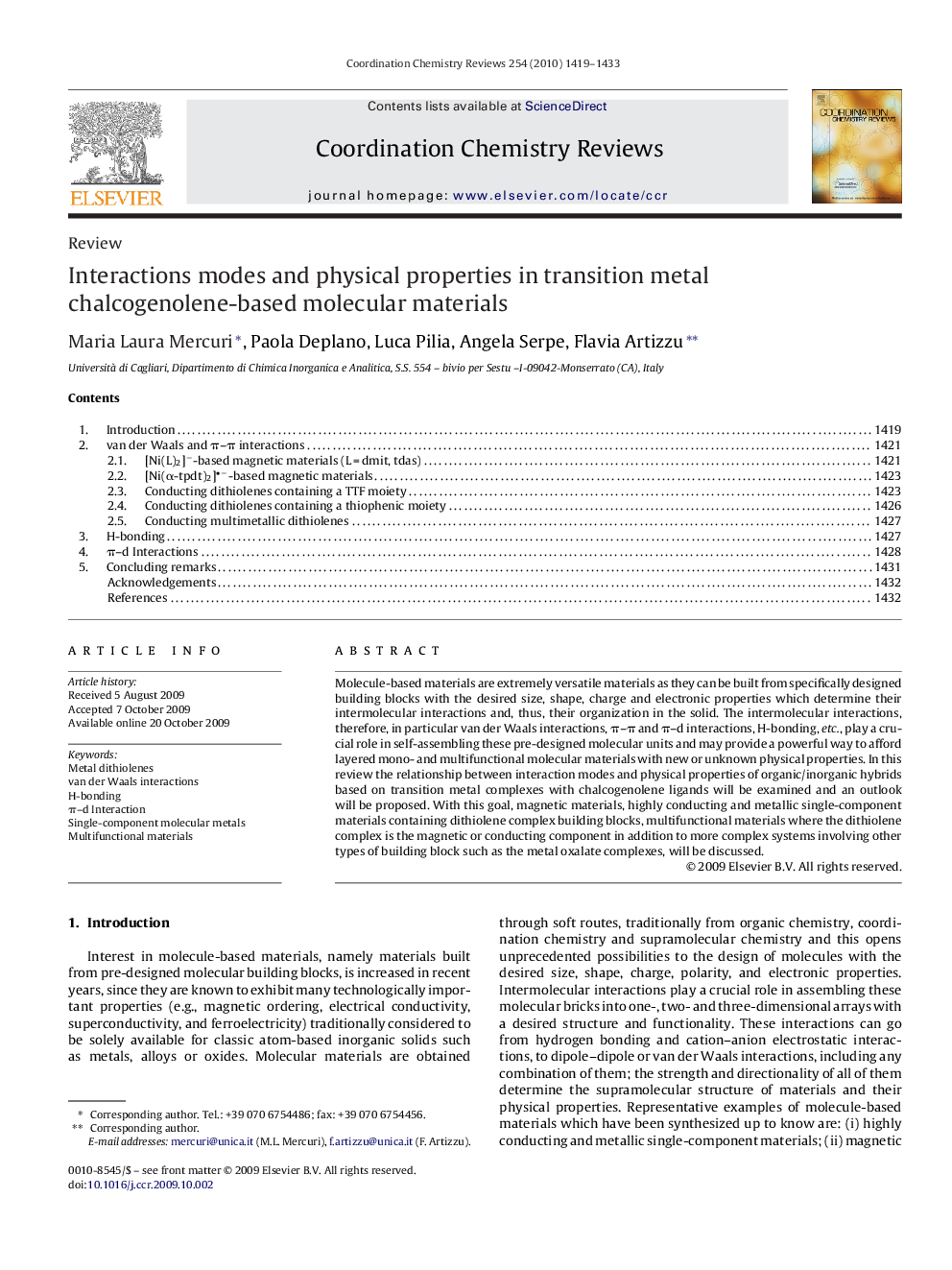| Article ID | Journal | Published Year | Pages | File Type |
|---|---|---|---|---|
| 1299284 | Coordination Chemistry Reviews | 2010 | 15 Pages |
Molecule-based materials are extremely versatile materials as they can be built from specifically designed building blocks with the desired size, shape, charge and electronic properties which determine their intermolecular interactions and, thus, their organization in the solid. The intermolecular interactions, therefore, in particular van der Waals interactions, π–π and π–d interactions, H-bonding, etc., play a crucial role in self-assembling these pre-designed molecular units and may provide a powerful way to afford layered mono- and multifunctional molecular materials with new or unknown physical properties. In this review the relationship between interaction modes and physical properties of organic/inorganic hybrids based on transition metal complexes with chalcogenolene ligands will be examined and an outlook will be proposed. With this goal, magnetic materials, highly conducting and metallic single-component materials containing dithiolene complex building blocks, multifunctional materials where the dithiolene complex is the magnetic or conducting component in addition to more complex systems involving other types of building block such as the metal oxalate complexes, will be discussed.
